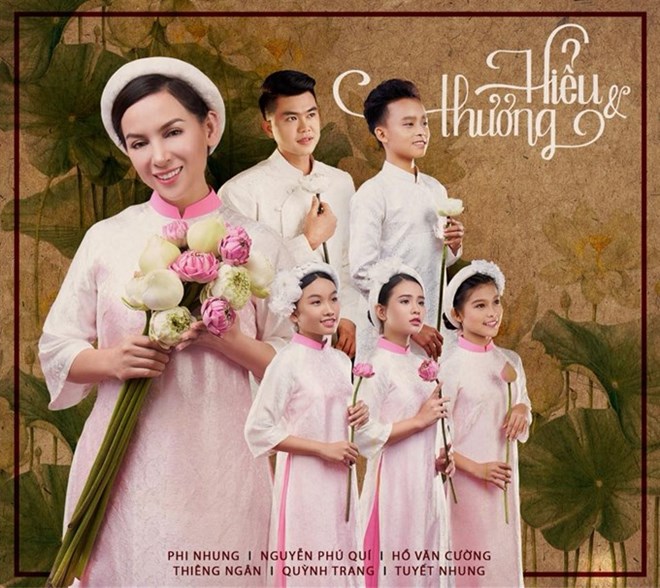
Vietnamese-American singer Phi Nhung, who has more than 20 years in the industry, will release an album to raise funds for poor children next week.

Cover of the album Hieu và Thuong (Understanding and Love) by
Vietnamese-American singer Phi Nhung (left) (Photo from the artist’s
facebook)
The album, Hieu va Thuong (Understanding
and Love), sends messages on love, sharing and compassion. It includes nine
songs in bolero, pop and folk contemporary music.
Featured songs are performed by Nhung and child singers Ho Van Cuong, Quynh
Trang, Pham Tuyet Nhung and Pham Thien Ngan.
Nhung was born in 1972 in the Tay Nguyen (Central Highlands) province of Pleiku
(now Gia Lai province). Her father was an American serviceman. She moved to
live in the US as part of its immigration policy towards Amerasians.
She began her career in 1989 in California and has worked with American and
French entertainment centres and music producers.
In 2005, she returned to HCM City and has released more than 200 solo and group
albums. Nhung runs her own charity fund for poor children.
Her concert, Phi Nhung Fan Meeting 2018, will take place at HCM City Youth
Cultural House on January 13.
The open-air event will feature dozens of guest singers, including pop star
Phuong Thanh and pop bands MTV and 5 Dong Ke.
Nhung will also pay for several hundred fans living in poor districts of
southern provinces to attend the event.
"I love singing for my young fans in my homeland," said Nhung.
"My daughter from the US will attend the concert and learn how much
Vietnamese fans love me," she added.
The show begins at 8pm at 4 Pham Ngoc Thach street, District 1. Entrance is
free.
More than 7,000 guests are expected to attend.
Source: VNA
With an increasingly vibrant and widespread emulation movement aimed at building cultured residential areas and cultured families, Yen Thuy District has been making steady progress toward improving both the material and spiritual well-being of its people, while fostering a civilized, prosperous, beautiful, and progressive community.
Once lacking recreational spaces and community facilities, Residential Group 2 in Quynh Lam Ward (Hoa Binh City) has recently received attention for the construction of a new, spacious, and fully equipped cultural house. The project followed the model of state support combined with public contributions in both labor and funding.
The "All people unite to build cultural life" movement, which has been effectively integrated with Kim Boi district’s socio-economic development goals, is fostering a lively spirit of emulation across local residential areas, hamlets, villages, public agencies, and enterprises. In addition, through the initiative, traditional cultural values are being preserved and promoted, while community solidarity and mutual support in poverty reduction and economic development are being strengthened.
A working delegation of the Hoa Binh provincial People’s Committee led by its Permanent Vice Chairman Nguyen Van Toan on June 11 inspected the progress of a project to build the Mo Muong Cultural Heritage Conservation Space linked to tourism services in Hop Phong commune, Cao Phong district.
Born and growing in the heroic land of Muong Dong, Dinh Thi Kieu Dung, a resident in Bo town of Kim Boi district, in her childhood was nurtured by the sweet lullabies of her grandmother and mother. These melodies deeply imprinted on her soul, becoming an inseparable part of her love for her ethnic group's culture. For over 20 years, this love for her hometown has driven Dung to research, collect, and pass down the cultural values of the Muong people to future generations.
In the final days of May, the Ethnic Art Troupe of Hoa Binh Province organized performances to serve the people in remote, mountainous, and particularly disadvantaged areas within the province. These were not just ordinary artistic shows, but they were the meaningful journeys aimed at spreading cultural values, enhancing the spiritual life of the people and contributing to the preservation of ethnic minority cultural identities.



